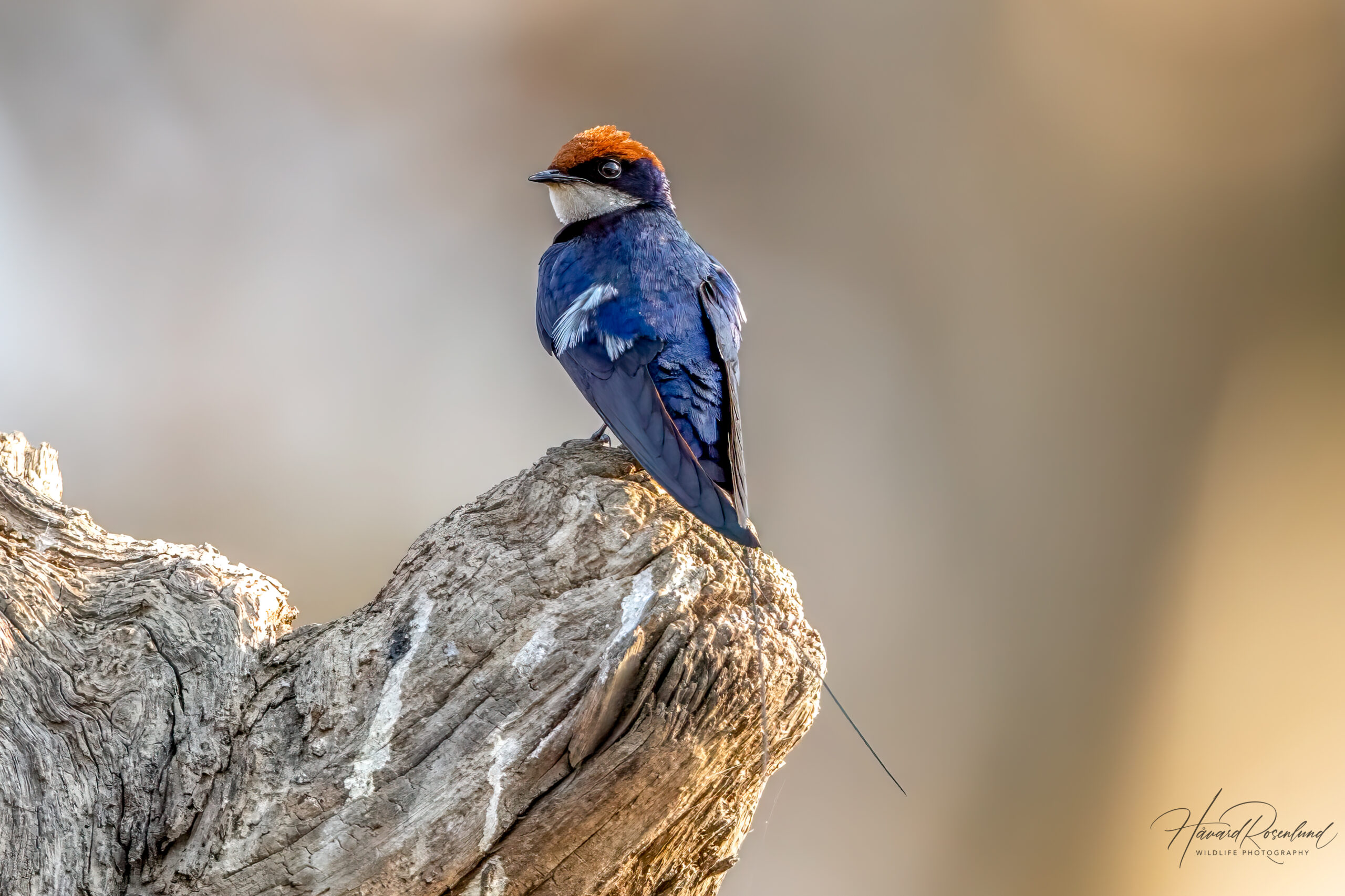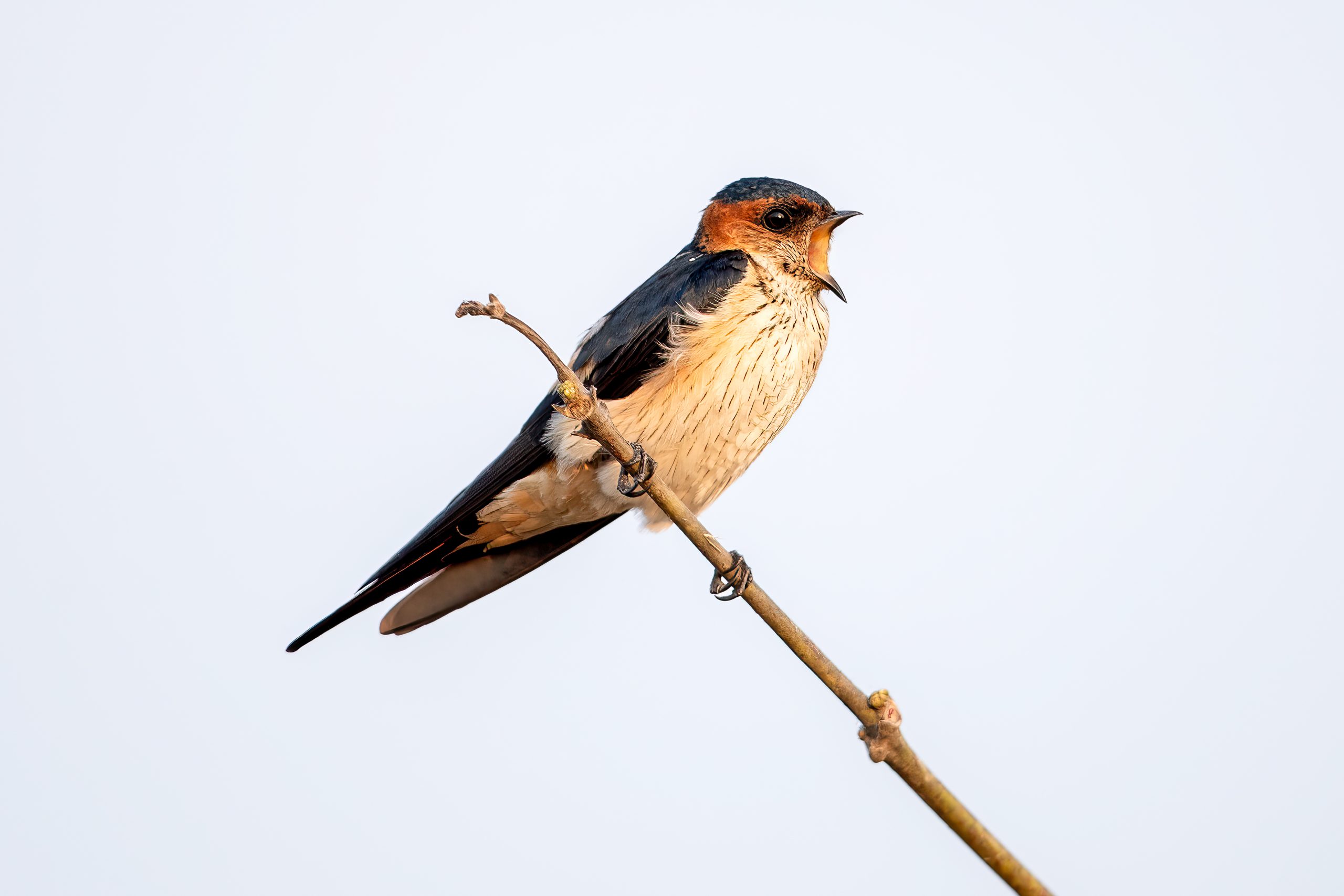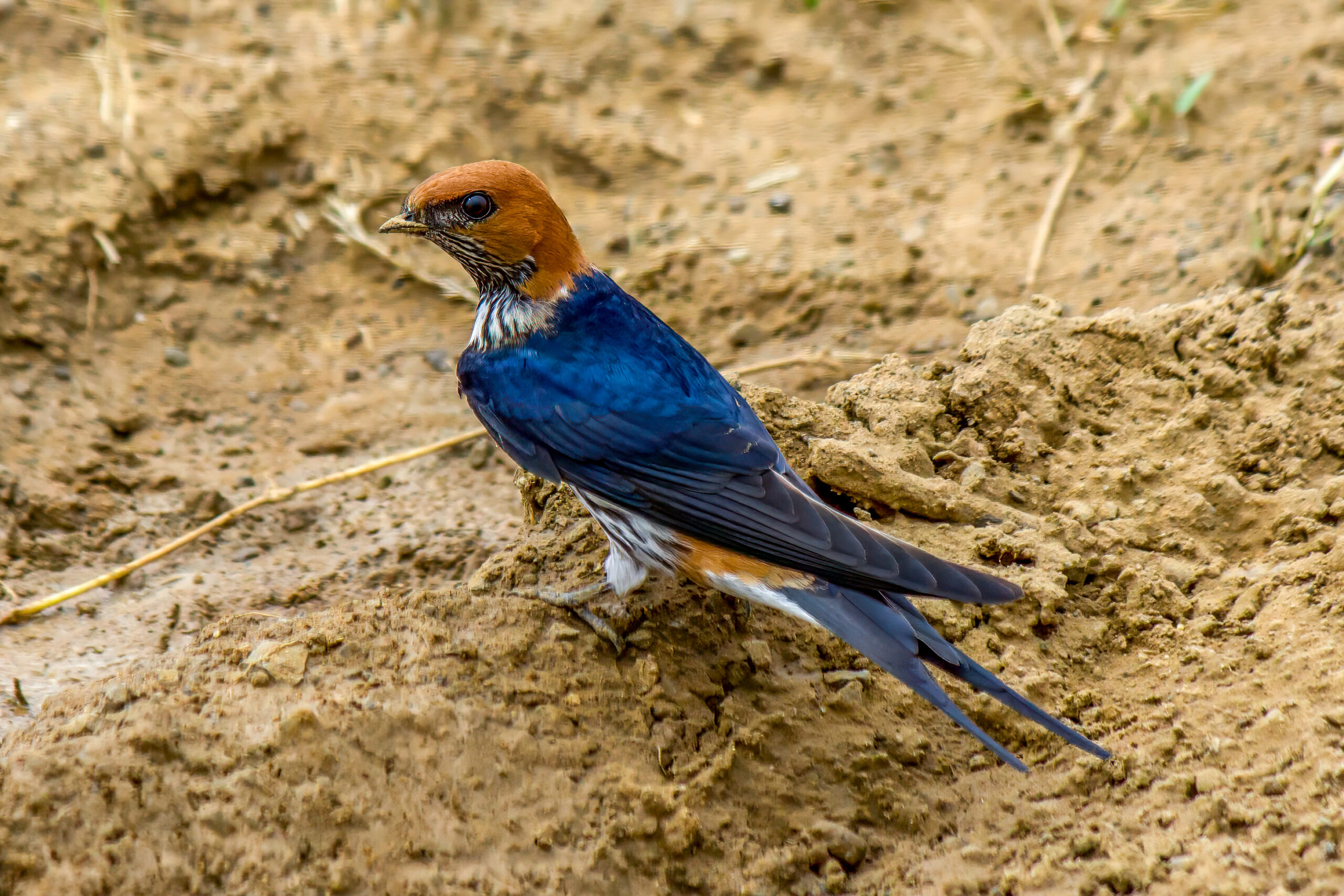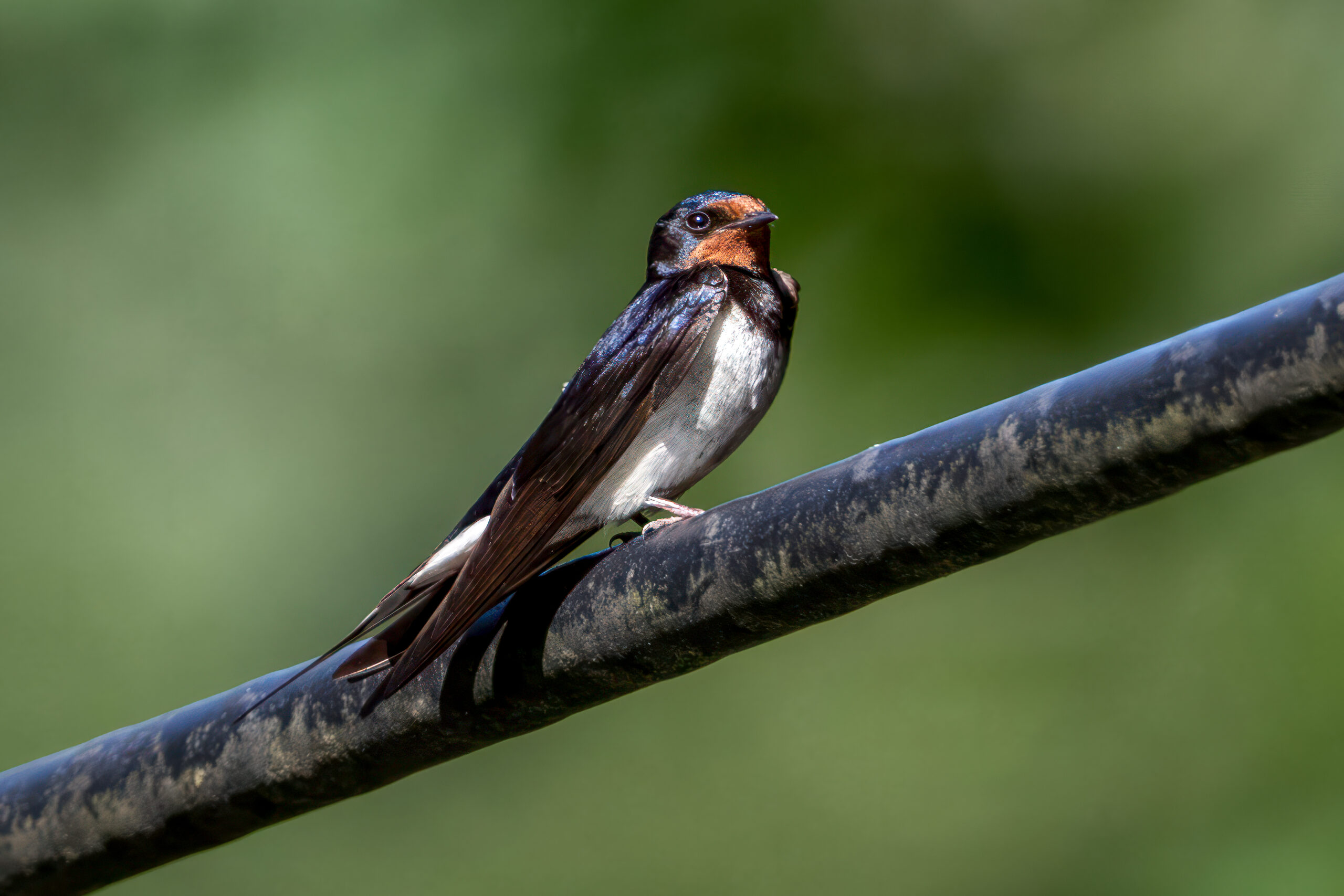Description
The wire-tailed swallow (Hirundo smithii) is a striking species of swallow known for its extremely long, wire-like tail streamers, which are unique to this species. Typically, it measures about 14-21 cm (5.5-8.2 in) in length, with the tail streamers adding extra length. This bird is characterized by its glossy blue upperparts, white underparts, and a red head cap. Females are similar to males but have shorter tail streamers. These birds are highly social and are often seen in pairs or small groups, especially during breeding season. This species is found across large portions of sub-Saharan Africa, most of South Asia, and parts of Southeast Asia.
Diet & habitat
The wire-tailed swallow thrives in open habitats near water, such as lakes, rivers, and wetlands. It’s often seen perched on wires or branches near water bodies. This bird feeds primarily on insects, which it catches in flight with remarkable agility and speed. Its diet consists mainly of flying ants, beetles, and mosquitoes. The bird’s aerial feeding habit is a spectacle, as it gracefully twists and turns in the air pursuing its prey.
Nesting
Breeding season varies by region but generally coincides with the onset of the rainy season. The wire-tailed swallow builds a bowl-shaped mud nest, often under the eaves of buildings, under bridges, or on cliff ledges, which both sexes construct together. The nest is lined with soft materials like feathers. Females lay 2-4 eggs per clutch, which are incubated for about 14-16 days. Both parents share the responsibility of feeding and caring for the young. Fledglings leave the nest about 18-22 days after hatching but remain dependent on their parents for some time.
Status
The wire-tailed swallow is widespread and abundant with no immediate threat of significant population decline. It is rather believed that the total population is increasing. However, habitat changes and pollution could potentially impact local populations. It is listed as least concern on the IUCN Red List.











